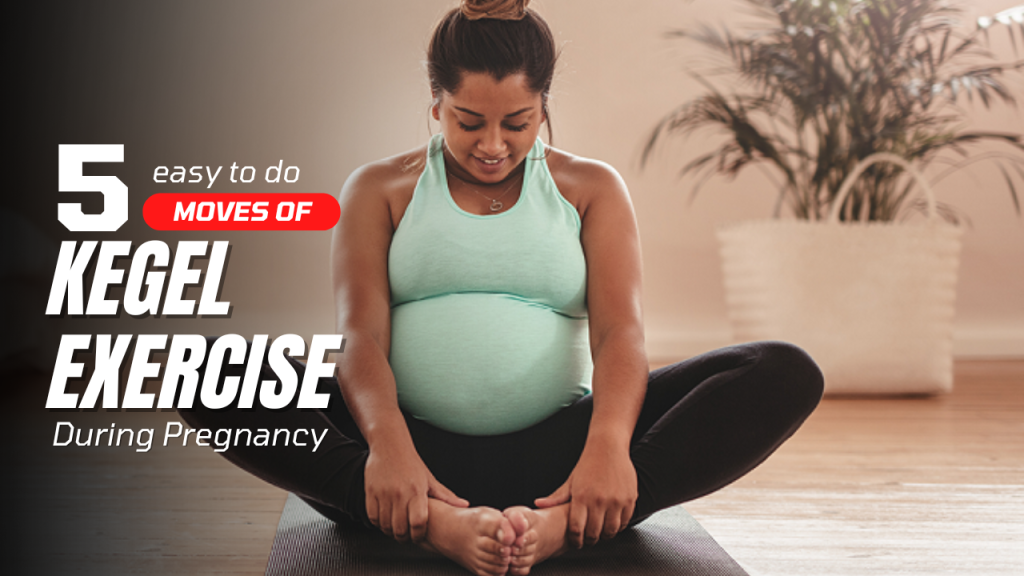Pregnancy brings a host of physical changes, and one area that requires special attention is the pelvic floor. Kegel exercises help strengthen pelvic muscles, supporting the uterus, bladder, and bowels. These simple yet effective exercises can prevent urinary incontinence, aid in smoother delivery, promote faster postpartum recovery, and also provides many benefits.

Benefits of Kegel Exercises During Pregnancy
- Strengthens Pelvic Floor Muscles: Helps support the growing baby and reduces the risk of incontinence.
- Prevents Pelvic Organ Prolapse: Provides better support to internal organs.
- Aids in Labor and Delivery: Stronger muscles contribute to better control during childbirth.
- Speeds Up Postpartum Recovery: Helps muscles regain strength faster after delivery.
How to Locate Your Pelvic Floor Muscles
To perform Kegel exercises correctly, you must identify the right muscles. The easiest way is to try stopping urination midstream. The muscles that help you do this are your pelvic floor muscles. However, do not make a habit of stopping urine flow as a regular practice.
Easy Kegel Exercises for Pregnancy
1. Basic Kegel Contractions
How to Do It:
- Sit comfortably or lie down.
- Tighten your pelvic muscles as if holding in urine.
- Hold the contraction for 5-10 seconds.
- Release and relax for 10 seconds.
- Repeat 10-15 times, three times a day.
2. Elevator Kegels
How to Do It:
- Imagine your pelvic floor is an elevator moving up.
- Gradually contract the muscles in small increments, like the elevator going up floor by floor.
- Once at the top, hold for a second, then slowly release in steps.
- Perform 5 repetitions daily.
3. Quick Flicks
How to Do It:
- Quickly squeeze and release the pelvic muscles in rapid succession.
- Aim for 10 repetitions.
- This helps strengthen muscles for sudden pressure, like sneezing or coughing.
4. Bridge Kegels
How to Do It:
- Lie on your back with your knees bent and your feet flat.
- Lift your hips while squeezing your pelvic muscles.
- Hold for 5 seconds, then slowly lower.
- Repeat 10 times.
5. Squat Kegels
How to Do It:
- Stand with feet hip-width apart.
- Lower into a squat position while contracting the pelvic floor.
- Hold for 5 seconds, then rise back up.
- Perform 10 repetitions.
Tips for Effective Kegel Exercises
- Avoid holding your breath; breathe normally.
- Do not engage other muscles like the abdomen or thighs.
- Stay consistent—practice daily for best results.
- Combine with prenatal yoga or gentle stretching for added benefits.
When to Start and Precautions
Kegel exercises can be started at any stage of pregnancy but should be performed with care. If you experience pain or discomfort, stop immediately and consult your doctor. Overdoing Kegels can lead to muscle fatigue, so balance is key.
Conclusion
Kegel exercises are a simple yet powerful way to strengthen your pelvic floor during pregnancy. They improve bladder control, support childbirth, and aid in postpartum recovery. Practicing these exercises daily can make a significant difference in your overall comfort and well-being. Stay consistent, follow the correct technique, and enjoy a healthier pregnancy experience.
Frequently Asked Questions (FAQs)
How soon will I see results from Kegel exercises?
Most women notice improvements in bladder control and pelvic strength within 4-6 weeks of consistent practice.
Can I do Kegel exercises while standing?
Yes, Kegel exercises can be done in any position—sitting, lying down, or standing. However, beginners may find it easier to start while lying down.
How often should I do Kegel exercises during pregnancy?
Aim for 10-15 repetitions, three times a day for optimal results.
Can Kegel exercises make labor easier?
Yes, a strong pelvic floor can provide better muscle control during labor, making pushing more effective and reducing the chances of tearing.
Are Kegel exercises safe in all pregnancy trimesters?
Yes, they are generally safe in all trimesters, but if you experience discomfort, consult your healthcare provider.
Can Kegels prevent postpartum issues?
Absolutely! They help reduce the risk of urinary incontinence and pelvic organ prolapse and aid in a faster postpartum recovery.





